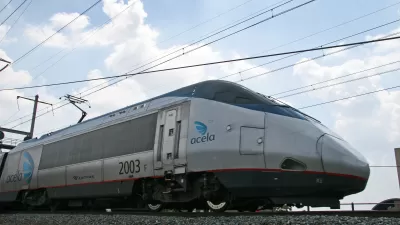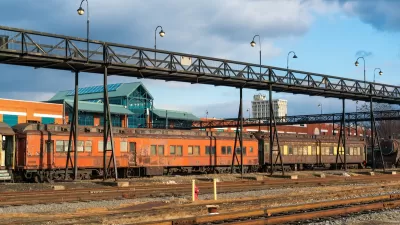The state has the chance to apply for a piece of $2.3 billion in federal funding to improve and expand Amtrak service.

With $2.3 billion in federal funding for passenger train service on the line, it remains unclear whether the state of Ohio will apply for a portion of the money. According to an article by Susan Glaser of Cleveland.com in Governing, Ohio Governor Mike DeWine “is awaiting answers to several key questions before making a decision about whether to seek federal money for expanded Amtrak service in the state.”
The governor wants to know how many new riders the service could get, the speed of the trains, how new passenger service would interact with existing freight service, and how much state funding would be required.
As Glaser explains, “This $2.3 billion is the first available for expanded intercity passenger rail service, part of a program to bring new routes to areas of the country that are underserved by train transportation.”
Ohio residents currently have limited access to intercity trains. Glaser notes, “There hasn’t been passenger rail service between Cleveland, Columbus and Cincinnati since the early 1970s.” This route was recently identified as a top priority by Amtrak. “Twelve years ago, under former Gov. Ted Strickland, the state received $400 million in federal funding to launch the 3-C route. Shortly after taking office, however, newly elected Gov. John Kasich famously returned the money to Washington because he was opposed to state support for passenger rail service.”
FULL STORY: With Amtrak Funds Now Available, Will Ohio Expand Rail Service?

Alabama: Trump Terminates Settlements for Black Communities Harmed By Raw Sewage
Trump deemed the landmark civil rights agreement “illegal DEI and environmental justice policy.”

Planetizen Federal Action Tracker
A weekly monitor of how Trump’s orders and actions are impacting planners and planning in America.

The 120 Year Old Tiny Home Villages That Sheltered San Francisco’s Earthquake Refugees
More than a century ago, San Francisco mobilized to house thousands of residents displaced by the 1906 earthquake. Could their strategy offer a model for the present?

In Both Crashes and Crime, Public Transportation is Far Safer than Driving
Contrary to popular assumptions, public transportation has far lower crash and crime rates than automobile travel. For safer communities, improve and encourage transit travel.

Report: Zoning Reforms Should Complement Nashville’s Ambitious Transit Plan
Without reform, restrictive zoning codes will limit the impact of the city’s planned transit expansion and could exclude some of the residents who depend on transit the most.

Judge Orders Release of Frozen IRA, IIJA Funding
The decision is a victory for environmental groups who charged that freezing funds for critical infrastructure and disaster response programs caused “real and irreparable harm” to communities.
Urban Design for Planners 1: Software Tools
This six-course series explores essential urban design concepts using open source software and equips planners with the tools they need to participate fully in the urban design process.
Planning for Universal Design
Learn the tools for implementing Universal Design in planning regulations.
Clanton & Associates, Inc.
Jessamine County Fiscal Court
Institute for Housing and Urban Development Studies (IHS)
City of Grandview
Harvard GSD Executive Education
Toledo-Lucas County Plan Commissions
Salt Lake City
NYU Wagner Graduate School of Public Service





























